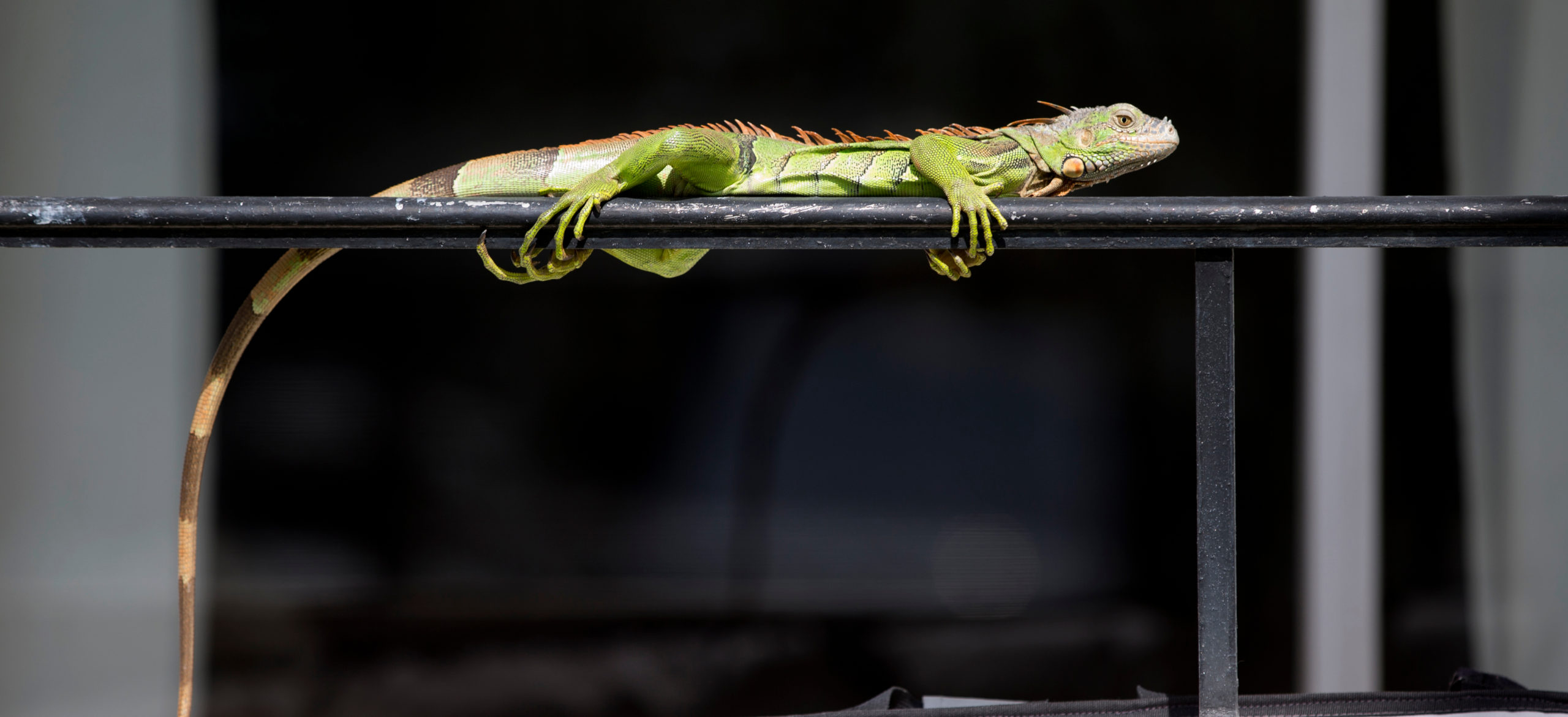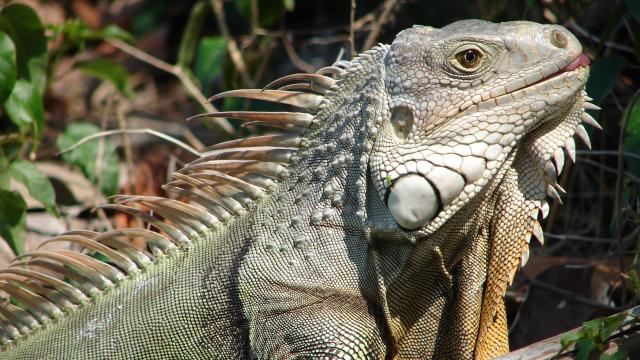As part of a $US63,000 ($80,048) research project to devise new and effective ways of pruning back the skyrocketing iguana population in south Florida, wildlife officials in the state have started to smash in the heads of iguanas, saying it’s a quick and “humane” form of euthanasia. Sounds dreadful – and it is – but the situation in Florida is more complicated than it appears.
An iguana seen in Bahia Honda, Florida Keys. Photo: Skye am i/Wikimedia
Florida has an iguana problem. Over the past decade, the population of this invasive lizard has absolutely exploded. Native to Mexico and Central America, these herbivorous lizards were introduced to the state as pets, but they have since taken Florida by storm, munching on plants and flowers in gardens, and damaging footpaths and seawalls with their burrows. Many Florida residents now consider them pests, on par with rats and squirrels.
As Susannah Bryan reports in the Sun Sentinel newspaper, conservationists from the University of Florida have embarked on a project to explore new ways of reducing iguana populations, while finding new tricks to help homeowners keep the pests away. As Bryan writes:
A 15-member team from the University of Florida is using a tool called a captive bolt gun that sends a bolt into the brain, similar to what is used in the livestock industry. They’re also smashing the creatures’ heads against solid objects, including a truck and boat they’re using to track them down.
“Most of what we’re doing is blunt force trauma,” said Jenny Ketterlin, a wildlife biologist and research coordinator with UF. “Hitting their head very hard against a solid object.”
Destroying their brains quickly is the most humane way to kill them, she said. Decapitating the animals without anesthesia would kill them but not be considered humane.
Over a three month span, the team has killed nearly 250 iguanas along a canal in Davie, a town in Broward County near Fort Lauderdale where the researchers are based. Ketterlin says the head-bashing technique falls within the bounds of Florida’s animal cruelty laws.

An iguana lounges on a railing on a condominium in Sunny Isles Beach, Florida. Photo: AP
Other extermination techniques have been rejected because they have been deemed unsafe, inefficient, unproven, or even crueler than brain bashing. For example, deadly chemicals, such as Halothane, Isoflurane and Sevoflurane, have to administered by a veterinarian (so it’s very time consuming), take upwards of 20 minutes to kick in (unlike in mammals, who feel the effects within a minute), and the safety profile of these drugs has yet to be determined. Freezing iguanas used to be considered OK, but research suggests it creates painful ice crystals in the lizards’ brains. Decapitation has likewise been rejected, as awareness can persist for upwards of a full minute after an iguana’s head has been chopped off.
“Appalling,” Lori Marino, the founder and executive director of The Kimmela Center for Animal Advocacy, told Gizmodo. “This is not conservation any any measure. It’s extermination. There is nothing humane about ending the lives of healthy animals. The University of Florida researchers should be ashamed of themselves.”
Joe Wasilewski, an iguana expert and wildlife biologist based in Princeton, Florida, says there’s no perfectly humane way to kill any living being, but until something better comes along, this method is among the better options.
“Look, we kill millions upon millions of rats and cockroaches each year,” he told Gizmodo, saying mass exterminations of pests are common. “The last thing I want to do is harm one. I’ve spent my whole career trying to improve their island habitats, but the sheer number of iguanas is exploding – it’s a situation that’s not getting better any time soon.”
Wasilewski said he’s not surprised the media is running with this story, admitting he also cringed when he heard that conservationists were smashing in iguana heads. “But in less than a second these lizards go from being cognisant to completely dead,” he said. “Is that cruel?”
That said, Wasilewski is hoping other killing methods will eventually be entertained. The claim that freezing causes painful ice crystals may have been debunked in 2015 by researchers from the University of Sydney, he pointed out. Also, his team is currently investigating chemical methods, but cautioned the technique is “not perfected yet”.
For homeowners who want to keep iguanas away, Wasilewski recommends trimming back vegetation, and planting flowers and plants that don’t attract the voracious lizards. Other measures include removing rocks or other shelter spots which iguanas use for protection.
As to why the iguana population is suddenly skyrocketing in Florida, Wasilewski says scientists still don’t know. He says it could be climate change related, and/or something to do with shifts in vegetation. He’s not sure, but what he does know is that Florida’s iguanas look incredibly healthy. So healthy, in fact, that females – who lay upwards of 50 to 60 eggs per nest – are able to lay a second batch during a single breeding season.
“This means their growth is practically exponential,” said Wasilewski.
